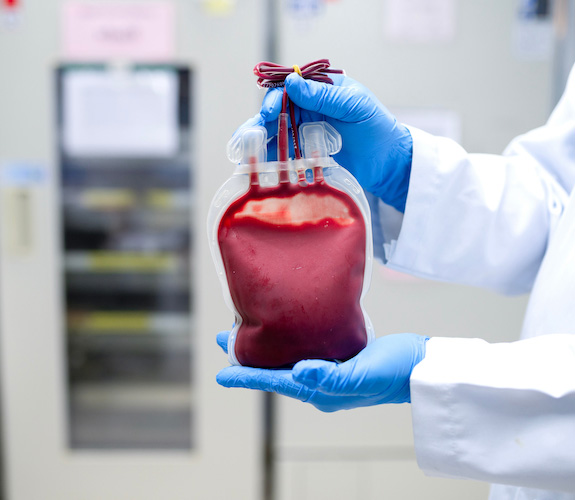Our Science
Our Science
Strong foundational science has proven that oxygen has detrimental effects on red blood cells (RBCs) during storage1-6 Excess oxygen contributes to RBC degradation, leading to development of the storage lesion – the collection of metabolic, oxidative, and structural changes to RBCs that affect their quality, functionality, and viability.1,2,7
Our technology uses a proprietary sorbent layer to remove excess oxygen from RBCs during processing and then to preserve them in a hypoxic state using an impermeable storage bag.8 This method consistently protects the high-quality RBCs throughout the entire storage period.9,10
See how conventional RBC processing and storage can be improved by applying Our Science.

Stored RBCs

Storage Lesion

Hypoxic Storage
[1] Yoshida T, Prudent M, D’Alessandro A. Red blood cell storage lesion: causes and potential clinical consequences. Blood Transfus. 2019;17(1):27-52. [2] Yoshida T, Shevkoplyas SS. Anaerobic storage of red blood cells. Blood Transfus. 2010;8(4):220-36. [3] Rabcuka J, Blonski S, Meli A, et al. Metabolic reprograming under hypoxic storage preserves faster oxygen unloading from stored red blood cells. Blood Adv. 2022; 6(18):5415-5428. doi: 10.1182/bloodadvances.2022007774. [4] Orlov D and Karkouti K. The pathophysiology and consequences of red blood cell storage. Anesthesia 2015,70 (Suppl. 1). [5] Yoshida T, Blair A, D’Alessandro A, et al. Enhancing uniformity and overall quality of red cell concentrate with anaerobic storage. Blood Transfus. 2017;15(2):172-181. [6] Zimring JC. Established and theoretical factors to consider in assessing the red cell storage lesion. Blood. 2015; 125 (14): 2185-2190. [7] DʼAlessandro A, Yoshida T, Nestheide S, et al. Hypoxic storage of red blood cells improves metabolism and post-transfusion recovery. Transfusion. 2020;60(4):786-798. [8] HEMANEXT ONE® (Blood container set used to process and store CP2D/AS-3 Red Blood Cells, Leukocytes Reduced, and O2/CO2 Reduced) [US Instructions for Use]. Lexington, MA: Hemanext Inc. HEMANEXT ONE® (Blood container set used to process and store CPD/PAGGSM Red Blood Cells, Leukocytes Reduced, and O2/CO2 Reduced) [OUS Instructions for Use]. Lexington, MA: Hemanext Inc. [9] Whitley P, Wellington M, Sawyer S, et al. 2,3 Diphosphoglycerate content and oxygen affinity of Hemanext red blood cells. Poster presented at: The International Society of Blood Transfusion; June, 2018; Toronto, Canada. [10] Landry P, Ducas E, De Grandmont MJ, et al. Red blood cells anaerobic storage with Hemanext processing system. Poster presented at: The International Society of Blood Transfusion; 2018.
